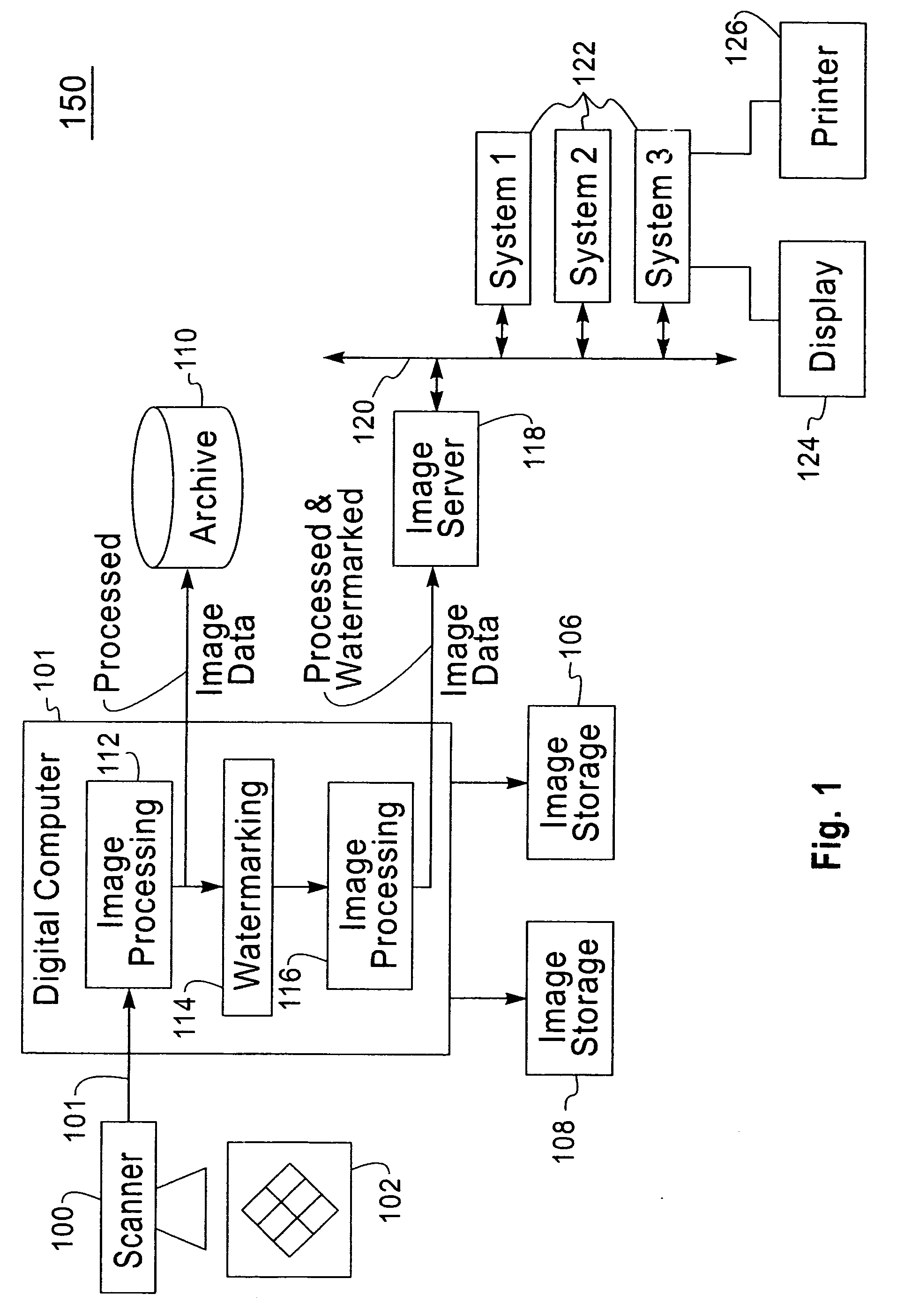Protecting images with an image watermark
a technology of image watermarks and images, applied in image watermarking, television systems, instruments, etc., can solve the problems of laborious and costly attempts to defeat or remove watermarks, and features of demonstrated visual images that are not relatively bold,
- Summary
- Abstract
- Description
- Claims
- Application Information
AI Technical Summary
Benefits of technology
Problems solved by technology
Method used
Image
Examples
Embodiment Construction
[0037]The present invention provides a robust means of watermarking a digitized image with a highly random sequence of pixel brightness multipliers. The random sequence is formed from four ‘robust-watermarking-parameters’ selected and known only by the marker and / or the marking entity. A watermarking plane is generated which has an element array with one-to-one element correspondence to the element array or arrays of the digitized image being marked. Each element of the watermarking plane is assigned a random value dependent upon a robust random sequence and a specified brightness modulation strength. The so generated watermarking plane is imparted onto the digitized image by multiplying the brightness value or values of each pixel by its corresponding element value in the watermarking plane. The resulting modified brightness values impart the random and relatively invisible watermark onto the digitized image. Detection of an imparted watermark requires knowing the watermarking plan...
PUM
 Login to View More
Login to View More Abstract
Description
Claims
Application Information
 Login to View More
Login to View More - R&D
- Intellectual Property
- Life Sciences
- Materials
- Tech Scout
- Unparalleled Data Quality
- Higher Quality Content
- 60% Fewer Hallucinations
Browse by: Latest US Patents, China's latest patents, Technical Efficacy Thesaurus, Application Domain, Technology Topic, Popular Technical Reports.
© 2025 PatSnap. All rights reserved.Legal|Privacy policy|Modern Slavery Act Transparency Statement|Sitemap|About US| Contact US: help@patsnap.com



